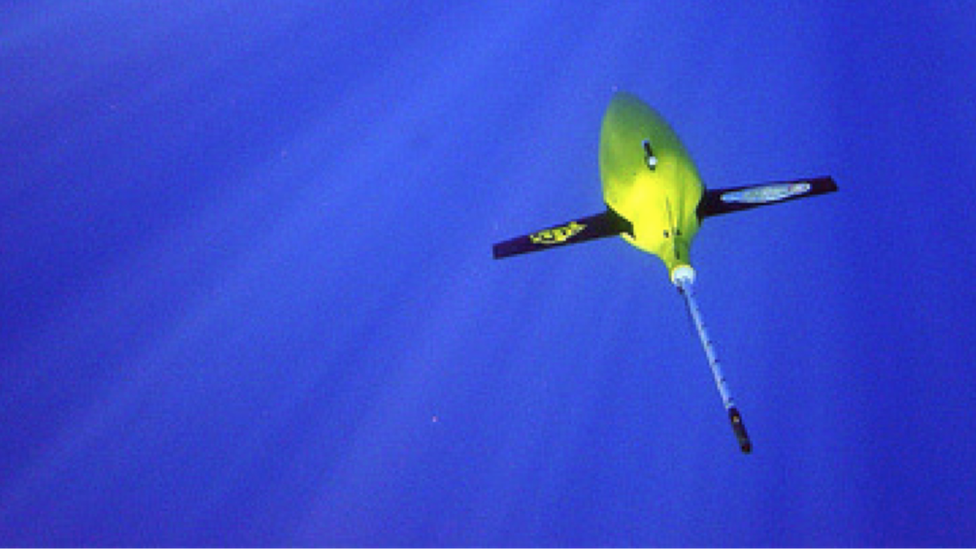Silent robots listen to ocean winds
- Published

Scientists are using small submersible robots to listen to the wind out at sea.
The 1.5m-long, 50kg sea-gliders carry hydrophones that pick up the noise underwater being made by the weather at the surface.
The researchers say the robots can provide additional information on wind and storm patterns where meteorological stations are scarce.
This is particularly true out over the oceans.
"I'm attaching passive acoustics monitoring sensors to autonomous submarines with the aim of developing new ways to monitor the oceans," explained Pierre Cauchy, a PhD researcher from the University of East Anglia, UK.
"For each deployment of a glider, it takes a day to put it in the water, but then the robot goes off for a few months to collect its data."
Deploying a sea-glider for a months' long mission
Mr Cauchy was explaining his work here at the .
The sound energy from high winds at the surface propagates down to the submersible which senses the noise at frequencies in the 2-10kHz range. "The faster the wind, the louder the sound," the UEA researcher said.
Satellites already judge wind speed over remote ocean locations by measuring surface roughness. To the spacecraft, calm conditions look very different compared with choppy seas. But the hydrophone-equipped gliders can be used to ground-truth this satellite information.
"Gliders allow you to go places you can't go with a boat or a buoy. For example, you could send them into a hurricane," Mr Cauchy said.
The robots are very hands-off. They are propelled by their buoyancy. A bladder is alternately filled and deflated with water, and then, as the robots rise and fall in the water column, their wings guide them forward.
The lack of a motor of any kind means they run silent and therefore capture completely clean acoustic data. This can either be pulled off the glider when it is recovered, or transmitted back via a sat-phone signal when the robot sticks its antenna out of the water.
Of course, the UEA gliders are capturing all manner of ocean sounds. These include the noise of chattering fish, echolocation clicks from whales, and the increasing din coming from human activities - from the likes of ship traffic and seismic surveys.
A hydrophone-equipped sea-glider undergoes tests back in the lab
Mr Cauchy spoke of new applications. One recent project found an association between the health of marine flowering plants - "seagrasses" - and fish noise.
"With your gliders, you could cruise along the shore and know the health of the ecosystem just by listening to the fish," he said.
Other uses for glider-captured sounds would include the study of whale population densities and in monitoring illegal fishing activity in no-take zones.
Jonathan.Amos-INTERNET@bbc.co.uk, external and follow me on Twitter: